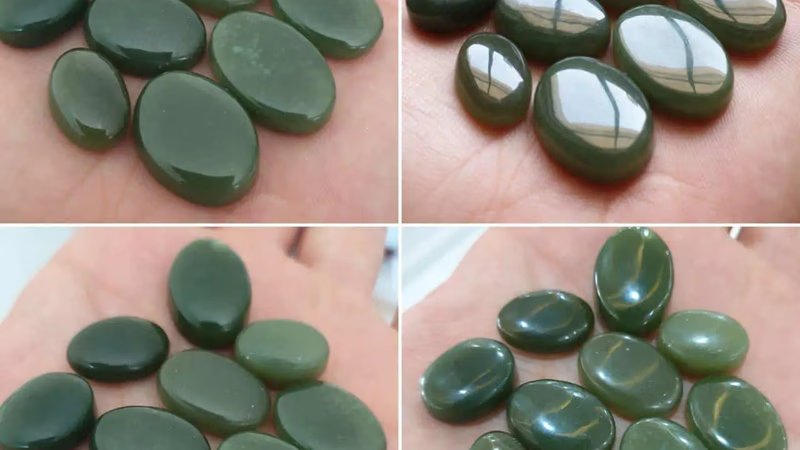
Jade mining regions: Myanmar, Guatemala, China - key sources.
Myanmar is historically known for producing some of the finest jade in the world. The Hpakant region in the Kachin State of Myanmar is famous for its high-quality jadeite, often referred to as "Burmese jade." The jade mines in this area have been a significant source of jade for centuries. Guatemala is known for its vibrant green jadeite, which is highly valued in the international market. The Motagua River Valley in Guatemala is a prominent source of jadeite, and the country has a rich history of jade carving and craftsmanship.
China has a long history of jade mining and is renowned for its jade culture. The Xinjiang region in northwest China is particularly famous for its nephrite jade, which is valued for its unique colors and textures. Other regions in China, such as Hetian and Xiuyan, are also significant sources of jade. Canada has emerged as a notable producer of high-quality nephrite jade. British Columbia, specifically the Cassiar Mountains and the Jade City area, is renowned for its jade deposits. Canadian jade is highly regarded for its vibrant green color and exceptional quality.
New Zealand is known for its nephrite jade, commonly referred to as "pounamu" or "greenstone" by the indigenous Māori people. The South Island of New Zealand, particularly the West Coast and the Arahura River, is famous for its pounamu deposits. Pounamu holds significant cultural and spiritual importance to the Māori, who have been carving and crafting it into traditional adornments and ceremonial objects for centuries. Australia is another country with notable jade deposits. Western Australia, in particular, is known for its nephrite jade. The Pilbara region and the Mount Brockman area are recognized for producing high-quality Australian jade. Australian jade is known for its deep green color and is often used in jewelry and carvings.
Kazakhstan is home to significant jade deposits, particularly in the Altai Mountains region. The jade found in Kazakhstan is primarily nephrite and is valued for its unique and diverse colors, including shades of green, white, and yellow. Kazakhstani jade has been used for ornamental and decorative purposes for centuries. The United States has jade deposits in several locations. Alaska is known for its nephrite jade, particularly in the Kobuk River and the Jade Mountain area. California also has nephrite jade deposits, with Big Sur being a notable location. Jade from these regions is known for its various shades of green and is often used in carvings and jewelry.
The highest quality jade is in Burma Myanmar and one of the most important and economical green jade mines in northern Burma can be mentioned. The jade of this region is formed and metamorphosed due to the very high pressure of the Himalayan Mountains. Secondary deposits are also found among the layers of sedimentary rocks composed of conglomerate and sandstone in the riverbed. The size of the jadeite rubble here may be as large as sand or several tons of very large boulders. Despite the strict control of the Burmese government, most of these jade is still smuggled to and traded in Chiang Mai, China, or Thailand. Elsewhere in the world, we can mention the United States (California), Japan, Guatemala, and the CIS.
Geographically, much of the world's jade is found around the rim of the Pacific Ocean, where subduction transports large slabs of oceanic lithosphere beneath continents and volcanic island arcs. This accounts for much of the jade found in South America, Central America, the United States, Canada, eastern Asia, and New Zealand. Perhaps the most attractive and valuable jade found in the United States is from the area around Jeffrey City and Crooks Gap in Wyoming. There, nephrite jade is found by prospecting alluvial sediments, looking for jade in stream-rounded pebble- to boulder-size pieces.China, Russia, Guatemala and New Zealand have the richest quality reserves of quality nephrite.
Russia is home to significant jade deposits, particularly in the eastern part of the country. The Sayan Mountains, located in the Republic of Buryatia and the Irkutsk region, are known for producing nephrite jade. Russian jade is valued for its unique shades of green and its association with traditional Russian craftsmanship. The most expensive mines are mined in Myanmar and then exchanged annually at the Great Rangoon Gemstone, Pearl and Pearl Trading Center. Hong Kong is another hub of this "meteorite". In addition to Guatemala, other countries in Central America, such as Honduras and Costa Rica, also have jade deposits. These countries are known for producing jadeite, similar to the jade found in Guatemala. Jadeite from these regions is prized for its vibrant green color and is often used in jewelry and traditional craftsmanship.
-

Myanmar"s Hpakant region is renowned for its high-quality jadeite, often called "Burmese jade. " This area has been a significant source of jade for centuries. Guatemala"s Motagua River Valley produces vibrant green jadeite, valued in the international market. China, with its rich jade culture, is known for nephrite jade from regions like Xinjiang and Hetian. Canada has emerged as a notable producer of nephrite jade, particularly in British Columbia. New Zealand"s South Island is famous for pounamu, which holds cultural significance for the Māori people. Australia and Kazakhstan also have significant jade deposits, with Australian jade known for its deep green color. The United States has nephrite deposits in Alaska and California, with notable locations like Big Sur.
Globally, much of the world"s jade is found around the Pacific Ocean rim due to geological processes. Countries like Russia and Central American nations also contribute to the global jade market, producing unique varieties prized for their colors and craftsmanship.
-
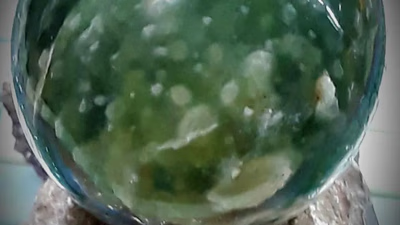
Jade is revered for its believed properties that promote balance, harmony, and well-being. It is thought to align the mind, body, and spirit, fostering a peaceful existence. The stone is associated with wisdom and clarity, enhancing mental faculties and decision-making abilities. Jade"s energy is said to support rational thinking and problem-solving while removing negative forces from environments. Green and purple jade are linked to the heart chakra, promoting emotional stability and deepening breathing. Additionally, jade is believed to strengthen memory and interpret dreams when placed under a pillow. Many consider jade a protective stone that shields against negative energies while attracting success and prosperity. Its calming influence helps alleviate anxiety and stress, encouraging emotional balance.
Furthermore, jade is thought to purify the body, supporting physical health and vitality by aiding the immune system. It also plays a role in spiritual growth by enhancing intuition and facilitating spiritual awakening. While these properties are rooted in traditional beliefs, many individuals find personal significance in incorporating jade into their lives. "
-
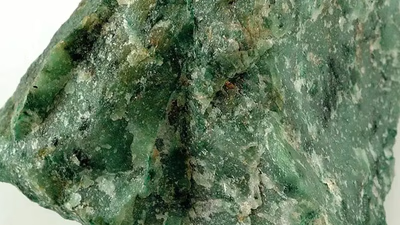
Jade is a durable gemstone but can be damaged by harsh chemicals, prolonged water exposure, and rough surfaces. To maintain its quality, avoid using household cleaners and remove jade jewelry during activities that may cause damage. For cleaning, use a soft cloth or brush with warm water and mild soap. Store jade in a soft pouch to prevent scratches and avoid extreme temperatures to prevent cracks. Jade consists of nephrite and jadeite, with nephrite being less valuable due to its lower hardness. Professional cleaning is recommended for intricate pieces or significant dirt buildup.
-
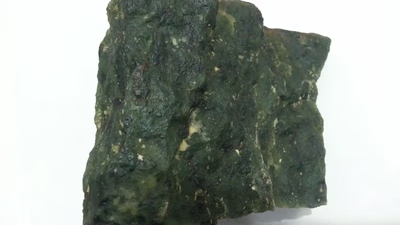
The price of green jade varies significantly based on factors such as color, transparency, purity, weight, and extraction location. Prices can range from $1 to $1 million depending on these attributes. The most valuable jade is sourced from Myanmar, with annual trading occurring in major centers like Rangoon and Hong Kong. In these markets, jade is sold in various forms including carved jewelry and antiques. The quality of jade is crucial; uncut or unprocessed pieces pose risks as they may be misrepresented. For instance, Myanmar green jade can cost between $5 to $2,500 per gram, while Khorasani jade from Iran is priced below $1 per gram. Black jade generally has a lower price point than green jade, with values around $2-3 per gram. Antique jade pricing is complex and requires expert evaluation due to factors like age and historical significance. Raw jade stones are often sold by weight; in Iran, prices for raw jade can be under $50 per kilogram but vary widely based on quality.
-
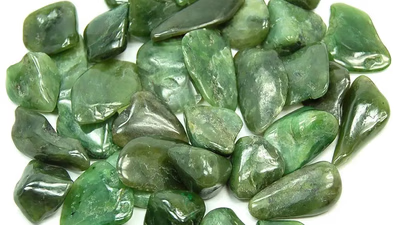
Visual examination is the first step in jade stone detection, focusing on characteristics like color, transparency, and texture. Experts compare stones to known samples and assess their overall appearance. Density and hardness measurements help distinguish between jadeite and nephrite, with jadeite being harder. The classification system categorizes jade into types A (Imperial), B (treated), and C (low quality). Misidentification can occur as jade resembles emeralds but differs in color variety and market value. Jade"s historical classification evolved from a single mineral to two distinct types recognized by mineralogists. Advanced techniques such as refractive index measurement, spectroscopy, and X-ray diffraction are essential for accurate identification. These methods help detect synthetic or treated stones, while UV light can reveal fluorescence patterns unique to jadeite.
Expertise from gemologists is crucial for authenticating jade due to the high market value of genuine specimens. Understanding these detection methods is vital for buyers to avoid counterfeit stones. "
-
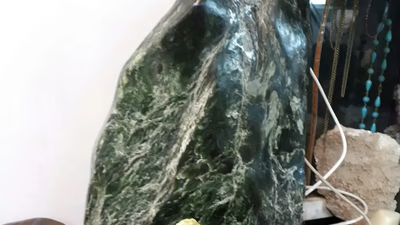
Jade quality is primarily determined by color, transparency, texture, and luster. Jadeite and nephrite exhibit a variety of colors, with vibrant hues being more desirable. Jadeite"s value increases with its transparency; high-quality jadeite is translucent, while nephrite is typically opaque. Jade is categorized into several grades: Category A represents high-quality jade with excellent color and transparency; Category B involves surface treatments that enhance appearance but compromise purity; Category C includes industrially dyed stones; Category B-C combines both methods; and Category D features a composite structure with plastic. Texture plays a crucial role in valuation, with smooth surfaces free from blemishes being preferred. Luster varies from matte to glassy, with bright reflections indicating higher quality. The craftsmanship involved in carving also significantly impacts jade"s value, as intricate designs and expert techniques enhance desirability.
-
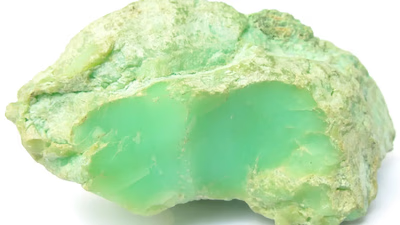
Jade is a gemstone with deep cultural significance, particularly in East Asia, where it symbolizes status, spirituality, and protection. In Chinese culture, jade is associated with virtues like wisdom and purity, believed to ward off evil spirits and provide spiritual protection. Various colors of jade exist, with the most valuable being the emerald green variety from Myanmar. Historically, jade carvings date back to 5,000 BC in China and have been used for good luck and healing properties. The value of jade is determined by its color, transparency, and texture; darker shades command higher prices. However, buyers must be cautious of counterfeit stones that are difficult to distinguish from genuine ones. The classification system includes "Imperial Jade" (Jade A), treated stones (Jade B), and low-quality dyed stones (Jade C). Consulting a reputable jeweler is essential to avoid purchasing fakes.
Jade"s connection to spiritual growth and enlightenment enhances its appeal as a bridge between physical and spiritual realms. Its beauty and rarity have captivated enthusiasts for centuries. "







